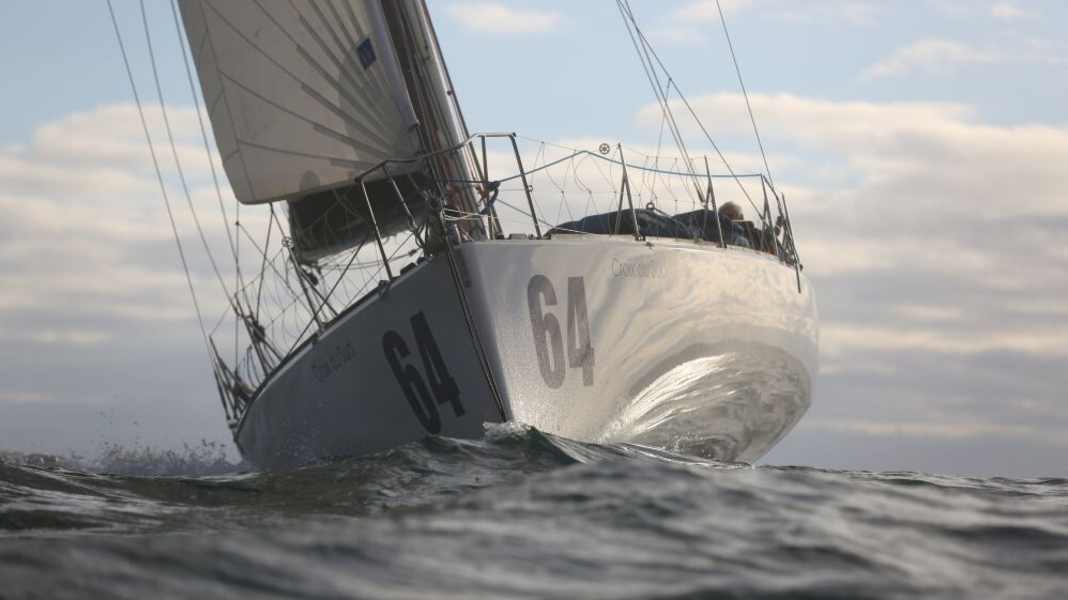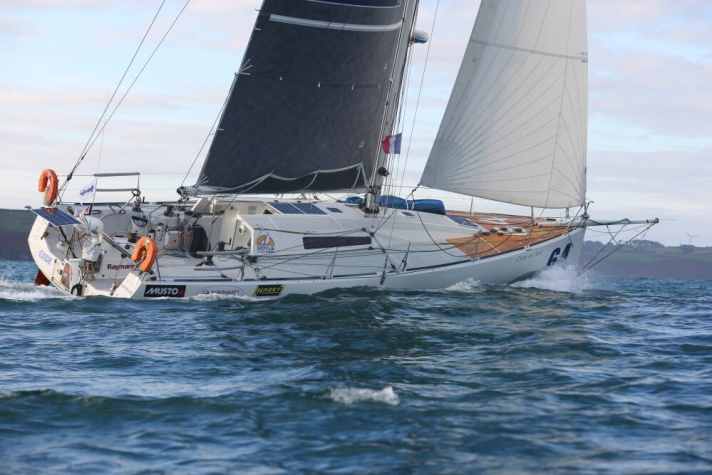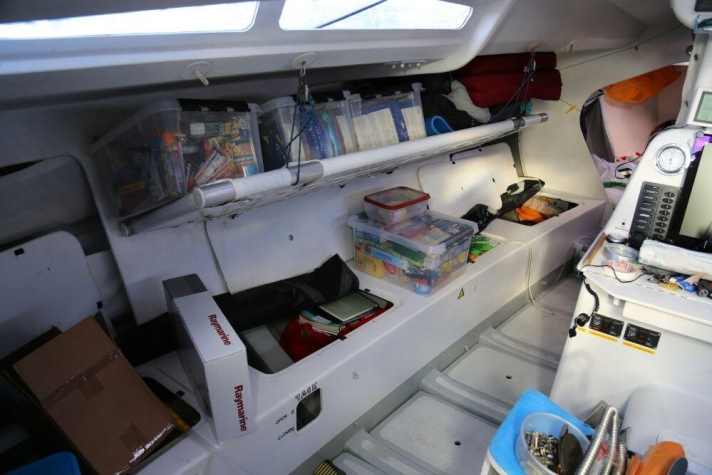
In the beginning there was the Pogo. No, not the big one that everyone knows today, because it embodies a new way of sailing. It was the small one, the Pogo 6.50, the original model, the concept of designer Pierre Rolland and a few mini-transat freaks. Their collection of ideas was the blueprint for everything that is new, radical and innovative today: Seascapes, Flyer, and, and, and. The original blueprint was created in 1995 in Saint Marine/Combrit in Brittany, the home of Pogo, which at the time was a garage.
The success of the original Pogo is legendary. It combined seaworthiness with robustness, speed and ingeniously simple handling.
The Class 40 yachts work in a similar way in principle, and the same attributes apply to them. They also have a similar origin to the original Pogo, as they are also the result of a group of less innovative sailors, including a value boss and a Vendée skipper and journalist. Not as wild and flashy as the mini-freaks of yore, but somehow more grown-up and experienced, but still willing and able to think more creatively than others.
Experienced guys around Pogo shipyard boss Christian Bouroullec thought about what a "modern boat around 40 feet" should actually look like today. That was around 2004. At the time, the construction rules fitted onto a single sheet of paper, and this described the low-tech version of a high-tech Open 40 (just as the original Pogo was a low-tech version of a high-tech mini): Wide, strake frames - which are more reminiscent of a wok, especially at the stern - water ballast, twin rudders, vertical stem, bowsprit. Slim squarehead sails. Only the mast was allowed to be made of carbon fibre.
Four of "these strange new 40-footers" took part in the 2005 Fastnet Race. One of them was the "Yellow Basket" owned by three-time Vendée Globe skipper Patrice Carpentier, who was also one of Bouroullec's initiators.

This was followed by the success stories of the "cruising boats" on the Route du Rhum 2006 and the Transat Jacques Vabre, very prominent skippers switched to the "warm water boats", which - the experts agreed - should probably only stay "between the turning circles". No organiser could avoid the new vest-pocket Open 60s. Boris Herrmann started his Class 40 campaign with his "Beluga" in 2008, when the legendary Transat (formerly Ostar) was only advertised for 60s and 40s. Cruising sailors, multis? They had to stay at home.
The big breakthrough for the small boats, however, was the Global Ocean Race, a seemingly unprecedented round-the-world regatta in the spirit of its classic predecessors. The ability of the boats to achieve this was doubted above all by those to whom the names of those who gave this spirit a new form meant nothing: Josh Hall and Brian Hancock, two of the most experienced extreme sailors ever. Because the two knew exactly what was important, they created the "Category Zero" safety level: it included watertight bulkheads and mathematical proof of righting methods. A hurdle that caused potential participants headaches and affected designers long evenings with their computers.
Solutions were found, but doubts remained: Benoit Parnadeau, himself a Vendée Globe skipper and friend of Boris Herrmann, said in 2008 at the end of a flyover when jokingly asked if he didn't want to sail around the world with Herrmann: "Only if you seal the stern, Boris". Boris didn't close the stern, but he won.
But time doesn't stand still, and it has long been considered good form for designers to have a Class 40 design available, i.e. one of these formerly "strange new 40-footers". The names of the designers are now a who's who of the Open 60 scene: Verdier, Rogers, etc. Henrik Masekowitz's "Croix du Sud" is a Marc Lombard boat (as is the "Gryphon Solo 2" of his competitor Joe Harris), the first Pogo 40 came from Groupe Finot. Today, encounters with modern "40s" are no longer fun: during the preparation, Masekowitz's "Croix du Sud" crossed paths with brand new, professionally maintained and sailed boats with their sliding roofs, splash water protection coamings, two companionways, centre winch and kick-up rudders several times. In terms of technology and sailing, the new ones are somewhere between Open 60s, mini-transat prototypes and Figaro yachts. They are a different kettle of fish to previous generations.
There were rumours that those early "40s" were not very strong upwind (as they were said to be for every more extreme design). A very relative statement: they were simply not very pleasant to sail, but they were clearly upwind. What is not relative, however, is the statement that the new boats are much, much better. Sails, rigs, hull lines, everything is much more efficient. And the prices are higher. Every few years, a "10-foot phenomenon" can be observed in the extreme classes. This means that a modern boat today is as fast as a once "brand new" ten-foot larger boat. So a new Open 50 was faster than an old Open 60, a Class 40 faster than a 50, a production Mini faster than an old Proto, etc.
And below deck? The "saloons"? They seem to have become smaller, they resemble the sailor's survival cells in Minis or Open 60s, sandwich "fixtures" merge as load-bearing parts with the monocoque hull structure. Compared to a modern 40, the inhospitable interior of Masekowitz's boat resembles an empty dance hall. Suggested bulkheads, berths and toilet niches.

Generally speaking, it can be said that high-tech boats from a functioning mass formula rarely work. Open 40s no longer exist, Formula 18 high-tech cats only sail in a niche, even the H dinghy association has died of beauty. Classes that do without the extreme radical, for example in terms of weight reduction and technical upgrades, are completely different. In comparison, this guarantees affordable boats and close races in which a considerable number of yachts even reach the finish line.
This is how the Class 40s work.

